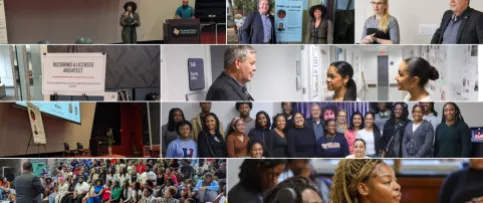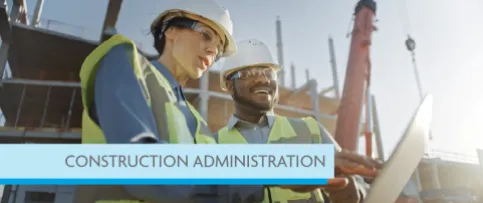Michigan architect Kenneth R. Van Tine, AIA, NCARB, LEED AP, was inaugurated as NCARB’s FY25 president at the 2024 Annual Business Meeting in June. As a product of the community college system, Ken is passionate about expanding pathways to practice and ensuring that the licensure process is accessible for individuals of all backgrounds. Learn more about Ken and his vision for the year ahead:
Tell us about your path to licensure.
My parents didn't have the means to send me to school; so, it was something I had to pay for myself. I ended up going to community college. I spent my first year and a half taking general education classes and initial design classes. After I completed all the classes that I could at the community college level, I transferred to Lawrence Technological University and continued my education there.
During my entire education timeframe, I worked full-time and went to school full-time—it was tough, but I was determined to be an architect. I completed about half of my experience requirements while I was still in school, because I was working full-time. So, after graduation, I only had to wait a year and a half before I could take the exam.
I worked at a small firm with eight people, where we did many different types of projects. My experience was well-rounded, which prepared me well for the Architect Registration Examination® (ARE®). Ultimately, I was licensed not too long after graduating.
Do you feel like your community college classes gave you a strong foundation for the next phase of your career?
Attending community college was a really positive experience for me because I was able to get the general education classes I needed while also spending a little bit more time developing some of my design skills. I also think it gave me a little bit of a head start compared to my university classmates, because I learned more of the technical aspects of architecture while at community college and was able to apply my design and drafting skills earlier on in my education.
Why was getting licensed important to you?
I've always wanted to be a licensed architect, and I've always wanted to have my own firm. It was a goal of mine right from the beginning. I had no other thought in my mind, but to do that. So, I decided to get licensed as soon as I could. And then I wanted to start my own firm and I did—I started my firm less than a year after I became licensed.
Tell us about your firm and the work you do.
Our firm is INFORM Studio, specializing in cultural, hospitality, mixed use, retail, urban and multifamily projects. We're located in Northville, Michigan, just outside the Detroit area. We also have an office in Chicago. We currently have 38 employees—including architects, mechanical, electrical engineers, interior designers, and urban designers—and we do work all over the country.
We believe that everybody has value. We also believe that everybody deserves the right to have good architecture and that creates a safe and comfortable environment. We look for projects where we can have an impact on people's lives, where we can inspire and impact the lives of the people who we are designing for and include them in the design process.
For us, design doesn't necessarily mean it has to be expensive. It means it has to be thoughtful, it has to be responsive, it has to meet the client needs, and it has to enhance the lives of the user in the community.
At INFORM, we also want to be innovative in our design solutions and processes, so we are constantly looking for ways to change the way our projects are delivered. We use computational design and digital fabrication in many of our projects. Our desire is to be a leader in the technology aspect of the profession, so we have a full-time technology specialist who writes software scripts and creates tools that we use to quickly develop iterations of floor plans, and facades, which our clients can use to choose the design solution that’s right for them. It’s had a real, positive impact on our workflow and provides greater value to our clients.
What do you love about architecture?
The thing I'm most passionate about is designing projects that will have an impact on people's lives. I enjoy working with the clients to develop their program, figure out what their programmatic needs are, and work through the technical aspects of the project. Putting the puzzle pieces together is what I enjoy the most. And I also enjoy the relationships that are built and the collaboration between the various team members in developing a project that exceeds the client’s expectations and inspires the people who use it.
What are you excited to work on during your year as NCARB president?
I’m really excited about NCARB’s efforts to create multiple pathways to become a licensed architect, including more accessible pathways for community college students. I feel that there are a number of people who are struggling to enter the profession, but worse yet, may have decided not have entered into the profession due to economic reasons, and we need to find ways for those people to have the opportunity to achieve their goal of becoming an architect.
Why do you think it’s important to offer multiple pathways to practice?
Offering multiple pathways provides opportunities for individuals who want to enter into this profession but may not have the means, resources or that have life circumstances that prevent it under the current “standard” path. Plus, people learn differently—some people learn by doing and some people learn by education. Those are all valid options and valid pathways into the profession.
NCARB is at a pivotal point in time, with tremendous opportunities to affect positive change. I believe that there is a desire to remove unnecessary barriers and provide opportunities to those who desire to enter the profession who may otherwise be excluded.
NCARB's role is to help standardize options and opportunities for people. This will help create a more diverse and inclusive profession where everyone has value.


